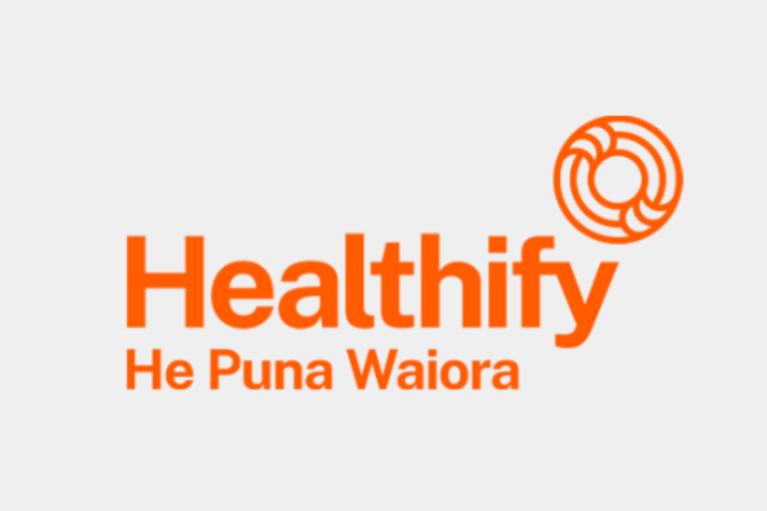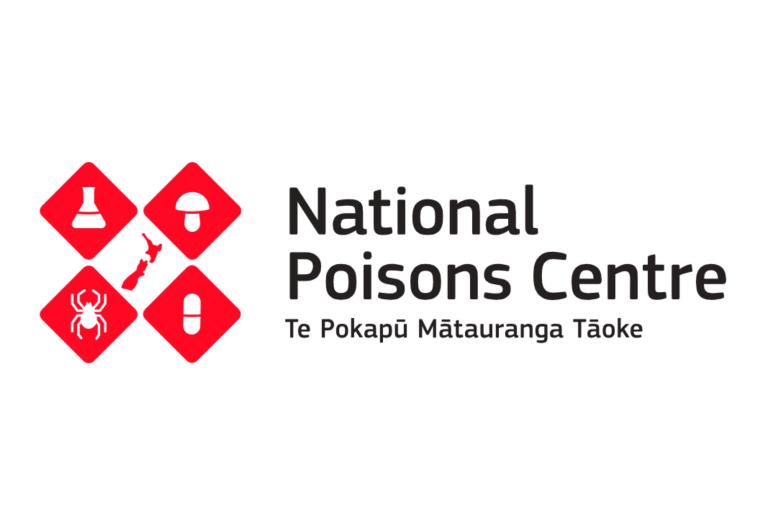A video about the safe use of paracetamol for children.
Source: Healthify
transcribeTranscript
If your child is in pain or is feeling miserable, paracetamol is a medicine that can help them feel better. But giving too much can be a bit dangerous.
My name is Giovanna, and I'm a nurse, and I'm going to be sharing some helpful tips on how to use paracetamol safely.
Paracetamol can be given to children and babies over 3 months old, but if your baby is under 3 months, take them to the doctor first before giving them paracetamol.
It can be given if your child needs pain relief for an ear infection or a headache or if they're feeling miserable. But it doesn't need to be given if they have a mild fever. Fever is your body's way of fighting an infection and just a fever alone doesn't need to be treated.
And if your child is getting a vaccination, you don't need to give them paracetamol just in case they feel miserable—wait and see if they need it first.
Don't give your child paracetamol for more than 2 days without seeking medical advice. But if your child has been really unwell and you're concerned, ring or take them in to see the doctor.
Paracetamol is available as liquid or tablets. The liquid form is commonly known as Pamol. It's available in two strengths—120 mg in 5 mL and 250 mg in 5 mL.
Before giving, check that the amount you have is the correct dose for the strength of paracetamol that you have.
Paracetamol is found in other medicines you may have bought in the chemist, so make sure you know what is in each one so you don't risk accidentally doubling up.
The medicine in the bottle tends to settle at the bottom, so before opening, mix it well by turning it over and back a few times.
Measure your paracetamol using an oral syringe or a measuring cup. Don't use just a spoon, as it might give you the wrong amount.
The right dose depends on the strength of paracetamol you are using and your child's weight. So before using paracetamol, you need to know your child's weight, then check the dosing table or follow the instructions on the prescription bottle.
Keep a record of how much paracetamol you give your child and the time that you've given it.
As your child grows, the dose of paracetamol will be increased based on your child's weight. So be sure that you are giving the correct dose.
Don't give more than four doses of paracetamol within a 24-hour period, and wait at least 4 hours between each dose.
If someone else is caring for your child, make sure you know what other medicines they've had and the time that they were given.
Keep all medicines out of sight and reach of the children—ideally in a locked cupboard.
Paracetamol doesn't need to be kept chilled, so you don't need to keep it in the fridge where children can easily get it. Also, check that it has a child-resistant cap. Ask your pharmacist about this.
When your child is sick, encourage them to rest or play quietly. Make sure that they are warm but not too hot. Encourage them to drink small sips of water regularly.
Used correctly, paracetamol is a safe and useful medicine to help your child feel better. But too much of this can damage your child's liver. If there's any chance that your child has had too much paracetamol, call your doctor or your nurse or the Poisons Centre immediately – 0800 764 766.
For more information about how much paracetamol to give your child, go to healthify.nz/paracetamol-children or use the Healthify paracetamol dose calculator https://healthify.nz/paracetamol-dose-calculator.
Key points about the safe use of paracetamol in children
- paracetamol is a medicine to help reduce pain
- your child doesn't need it for fever alone - if your child is miserable because of the fever, you can give paracetamol to make them more comfortable
- too much paracetamol can be dangerous
- keep all medicines out of reach of tamariki (children), in a locked or latched cupboard
- before each dose, check if your child still needs it
- know the right dose to give and check the strength
- give no more than 4 times in 24 hours
- if someone else has been caring for your child, ask if they gave your child paracetamol, how much and when
- check other medicines your child is taking - they may have paracetamol in them
What is paracetamol?
- paracetamol is a medicine to help reduce pain
- paracetamol has many brand names (including Pamol®, Junior Parapaed®, Panadol®, and Ethics Paracetamol®)
- it will not cause drowsiness or cause your child to sleep
Using paracetamol
Things to consider before giving your child paracetamol:
- you can use it for tamariki and pēpi (babies) over 3 months old
- younger pēpi must see the doctor
- only give paracetamol if it's necessary
- fever is a normal response to infection and is not in itself harmful, so you don't need to give paracetamol for fever alone
- if your child is miserable because of the fever, you can give paracetamol to make them more comfortable
Paracetamol and vaccination
If your child is having the MenB (Bexsero) vaccine, they are more likely to get a fever or a high fever afterwards. For this reason, it's a good idea to give paracetamol to help lower any fever and make your child more comfortable.
Check the advice about paracetamol for fever after MenB vaccination.
Meningococcal B Disease Vaccination
Apart from when having the MenB vaccine, you don't need to give pēpi and tamariki paracetamol before vaccination. If your child is miserable or distressed with a fever after vaccination, you can give a dose of paracetamol.
Using paracetamol around the time of vaccination reduces the immune system response to vaccination, when measured in a laboratory. But, there is no evidence that the reduced response decreases protection in tamariki against the diseases they were vaccinated against.
How long liquid paracetamol takes to work
It varies between individuals but paracetamol seems to have the maximum effect between 1 ½ and 3 hours after you give the dose. Pain levels and temperature may start to come down before this.
The correct dose of paracetamol for your child
- the dose of paracetamol depends on your child's weight and the strength of the paracetamol you have
- always measure doses exactly - ask your pharmacist or nurse for an oral syringe
- weigh your child, then check the dosing table below
- check the strength of the paracetamol you have
- ask the pharmacist, doctor or nurse to show you
Check the table below.
| Your child's weight | 120mg in 5mL | 250mg in 5mL |
| 5kg or less | Ask your doctor | Ask your doctor |
| 6 to 7 kg | 3.5 mL | 1.5 mL |
| 8 to 9 kg | 5 mL | 2 mL |
| 10 to 12 kg | 6 mL | 3 mL |
| 13 to 14 kg | 8 mL | 4 mL |
| 15 to 16 kg | 9.5 mL | 4.5 mL |
| 17 to 18 kg | 10.5 mL | 5 mL |
| 19 to 20 kg | 12 mL | 5.5 mL |
| 21 to 22 kg | 13 mL | 6.5 mL |
| 23 to 25 kg | 14.5 mL | 7 mL |
| 26 to 28 kg | 16.5 mL | 8 mL |
| 29 to 32 kg | 18 mL | 8.5 mL |
| 33 to 36 kg | 20.5 mL | 10 mL |
| 37 to 41 kg | 23 mL | 11 mL |
| 42 to 60 kg | 26 mL | 12.5 mL |
| Greater than 60 kg | 30 to 40 mL | 15 to 20 mL |
You can also use a paracetamol dose calculator.

The paracetamol dose calculator on the Healthify website will help you calculate the correct paracetamol dose for your child.
If your child won't take liquid paracetamol, and is old enough to safely swallow a tablet, you can give them a paracetamol tablet instead - make sure to give them the right dose:
- 1 tablet (500mg) if your child is more than 33kg
- 2 tablets (500mg each) if your child is more than 66kg
What to do before every dose of paracetamol you give
- check your child to see if they need another dose
- wait at least 4 hours between doses - give no more than 4 times in 24 hours
- keep a record of the doses you give your child - check when you gave the last dose, before giving it again
How to remember how many doses of paracetamol your child has had
Keep a record of the paracetamol doses you've given your child.
Child's name:
| Date and time | Child's weight | Strength 120 mg in 5 mL or 250 mg in 5 mL | Dose (mL) |
Storing paracetamol in your house
- keep it in a high place out of reach and out of sight of tamariki
- store it in a locked or latched cupboard
- the most common cause of poisoning is by tamariki helping themselves
- it doesn't need to be chilled so don't keep it in the fridge
- it should have a child-resistant cap - ask your pharmacist
Check out some tips on preventing mistakes with your child's medicines.
Medicine Safety: Tips For Parents
What if my child has too much paracetamol?
- too much paracetamol can damage your child's liver
- signs of overdose may include feeling sick (nausea), vomiting, diarrhoea, yellow skin or eyes, poor appetite, confusion or extreme sleepiness

If your child has had too much medicine - call the New Zealand National Poisons Centre immediately on 0800 POISON - 0800 764 766. This free emergency telephone service is available 24 hours a day, 7 days a week.
References
Medsafe New Zealand Medicines and Medical Devices Safety Authority. Paracetamol toxicity in children - let's reduce the risk. June 2011.
Minutes of the 145th Medicines Adverse Reactions Committee (MARC) Meeting 10 March 2011. Hepatic failure with paracetamol.
Medicines and Healthcare Products Regulatory Agency. UK public assessment report. November 2011. Liquid paracetamol for children: revised UK dosing instructions have been introduced.
SafeRx (Quality initiative by the Quality Use of Medicines (QUM) Team). Waitemata District Health Board. 2009. Review 2011. Paracetamol – safe prescribing – mind that child! (PDF, 274KB).
Healthify. Paracetamol for children.
